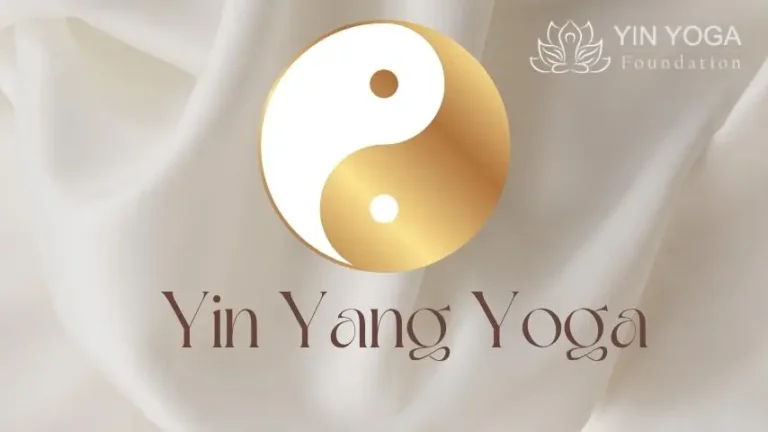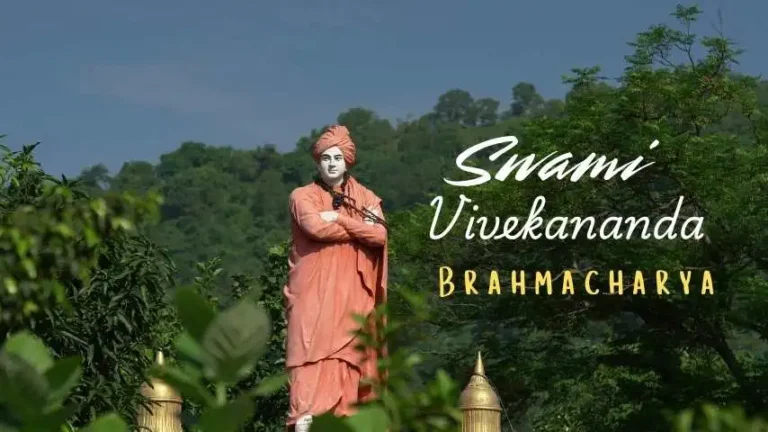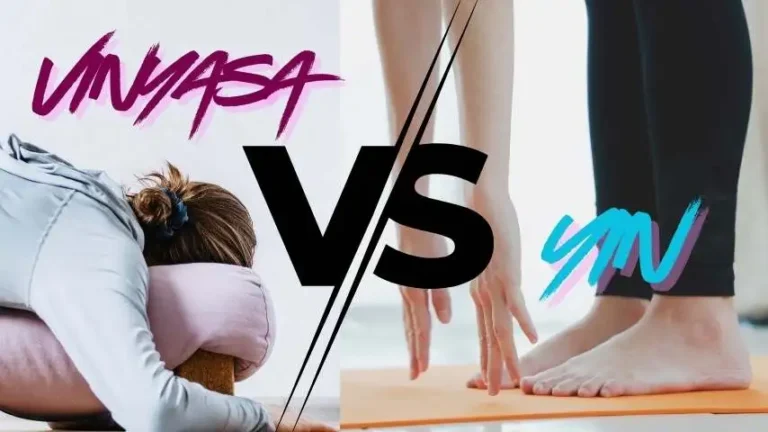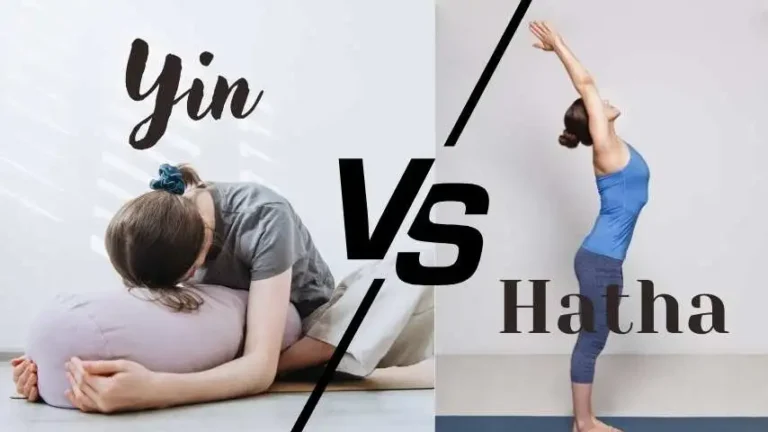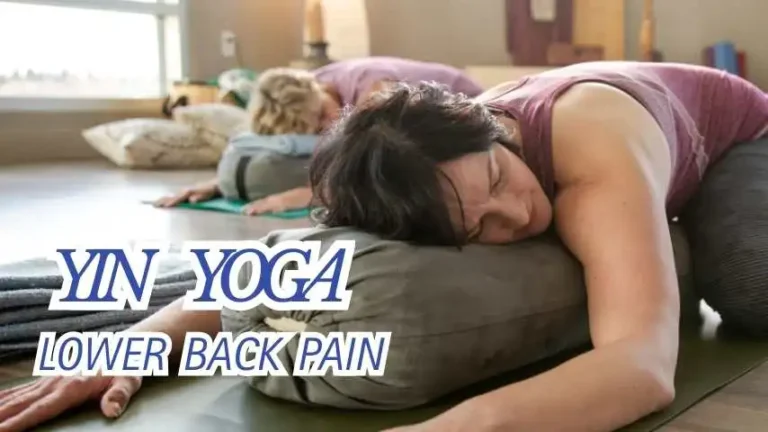
300 Hour Yin Yoga Teacher Training program in Rishikesh. It’s based n authentic program structures with a lot of depth. This is a helpful guide for creating your own courses or getting ready for approval.
300-Hour Yin Yoga Teacher Training in Rishikesh
This 300-hour Yin and Yang Teacher Training in Rishikesh is for yoga teachers and practitioners who want to learn more about both dynamic (Yang), and meditative practices (Yin). This training combines Hatha, Vinyasa, and Yin Yoga, mixing Eastern ideas with practical body knowledge and current teaching styles to help create harmony in life, both during practice and outside of it.
The Yang component is a practice that focuses on enhancing strength, stability and active energy by combining intelligent sequencing with breath-aligned movements and alignment-based yoga asanas. It is a blend of Hatha and Vinyasa, providing insights into class design, peak pose theory and progressive flow.
The component highlights stillness, surrender and introspection. The course will cover long-held positions, fascia theory and meridian line principles, as well as Traditional Chinese Medicine. Students learn how to use Taoist philosophy, the five elements and healing techniques that promote emotional balance and energy restoration.
The 300-Hour Yin Yoga Teacher Training course also includes:
- Meditation and Pranayama techniques
- Energetic anatomy: chakras and meridians
- Body anatomy: functional and subtle
- Themeing and sequencing to achieve seasonal and emotional balance
- Teaching principles that are trauma-informed and inclusive
This training is a holistic way to embrace both the active and passive aspects of yoga. Graduates can register their certification with the Yoga Alliance as part of a credential that includes 500 hours (when combined together with a 200 hour YTT and 300 Hour yin training course in rishikesh).
300-Hour Yin Yoga Teacher Training in Rishikesh Syllabus
1. Yin and Yang Foundations & Philosophy
Yin and Yang, a Taoist concept, describes the interdependence and interconnection of seemingly opposing forces in nature. Rather than in conflict, Yin & Yang are in a dynamic balance that is constantly flowing into & transforming each other.
Yin is the quality of calmness, darkness and coolness. It also represents receptivity and introspection. It relates to the sun and daytime. Yang energy shows up as power, activity, and movement. Yin manifests in the body and the mind as a passive, calm energy.
Yang on the other hand, represents movement, heat, activity and an outward expression. It relates to the sun and daytime. Yang energy shows itself through power, energy, and movement.
Together, Yin & Yang represent the inherent duality in all of life: strength and softness; inhale & exhale. Both cannot exist without each other. Good health — whether it’s about your body, feelings, or energy — comes when these elements work well together.
In yoga, this idea helps blend active (Yang) and calming (Yin) exercises. It creates a balanced approach which honors all aspects of the human experience – active engagement, balanced with mindfulness stillness.
- Introduction to Yin Yoga – origins, founders and philosophical underpinnings of Taoism, Yin-Yang and Taoism.
- The Tao Te Ching and its history, the Yin-Yang symbols, and Qi as a principle in Traditional Chinese Medicine are all explored.
- The Five Elements are studied in relation to the organs, meridians and emotions, as well as seasonal rhythms.
- Explore energetic anatomy, including meridians and chakras. Fascia, connective tissue, and organ clock.
2. Anatomy Physiology & TCM integration
Yin Yoga is a practice that combines Western anatomical principles with Eastern healing systems, especially Traditional Chinese Medicine (TCM). This practice is rooted both in Western anatomy as well as Eastern healing system. Traditional Chinese Medicine is one of these. Together, they provide a comprehensive understanding of the benefits Yin Yoga can bring to your long-term health.
1. Functional Anatomy of Yin Yoga
Yin Yoga focuses on the fascia, which is the connective tissue surrounding and interweaving muscles, bones and organs. Unlike Yang styles, which engage muscles by active engagement, Yin uses passive postures that gently stress and hydrate the fascia. This improves mobility and joint health.
Anatomical focus:
- Fasciae and myofascial line
- Joints, ligaments and connective tissues
- Skeletal variation (understanding different bone structures)
- Nervous System Regulation (stimulating parasympathetic states)
2. Physiology
Yin Yoga promotes stillness, extended breathing and activation of the parasympathetic system. It calms the entire body, reduces stress, improves digestion, sleep and emotional balance. This also has a positive effect on the vagus nervous and promotes overall nervous system resilience.
3. TCM & Energy Body Integration
The body is viewed by traditional Chinese medicine as an energetic system, where Qi flows through meridian –channels that are linked to emotions and organs. Each Yin posture is designed to stimulate meridian line stimulation, restoring balance and flow.
- The Five Elements Theory (Water Wood Fire Earth Metal) connects physical and emotional patterns.
- Each element is associated with an organ (e.g. Liver/Gallbladder= Wood) or emotion (e.g. anger, grief).
- Yin Yoga sequences often follow seasonal or elemental themes to promote deeper healing.
3. Teaching Methodology and Ethical Practice
- Build a Yin-specific structure for the class: Intention setting, invocations, sequencing, themesing (e.g. emotional release, seasonal moon cycles, affirmations), holding space with silence, poetic language and visualizations.
- Adjustments and hands-on method: Step-by-step technique to cue, tactile guidance, the use of props, senior-friendly and trauma-sensitive approaches, as well as how to adapt for students with injuries, chronic fatigue or high sensitivity.
II. Yin-Specific practice & Therapeutic Sequencing
1. Yin Asanas & Advanced Variations
Asanas of Yin Yoga involves gentle floor poses that you can stay in for as long as 10 minutes. These poses focus on deep tissues like ligaments and joints. They help relax tight areas, increase joint movement, and activate energy pathways known in Traditional Chinese Medicine.
Some basic Yin poses are Butterfly (or Dragon), Caterpillar (or Sphinx), Saddle, and Shoelace. You can use props to make each pose comfortable for different body shapes and sizes.
Students will explore deeper variations, extended holds, and breath awareness in advanced Yin. It includes wall-supported poses and twisted variations as well as targeted sequences to release organ meridians or emotions. Teachers can also theme their classes around seasonal energies (e.g. Spring Liver detox), or elemental balances (e.g. Earth grounding).
The advanced approach cultivates self-inquiry and therapeutic depth, making Yin a powerful compliment to Yang styles that are more active.
- Practice foundational Yin postures with deeper variations, including: Flying Dragon (Reclining Swan), Twisted Saddle (Twisting Frog), Wall-supported hip openers, and Twisted Saddle.
- Tools and adjustments can be customized to suit various requirements, like those of older adults, groups dealing with trauma, people experiencing burnout, or individuals recovering from injuries.
2. Emotional Release Themes & Therapeutic Flows
- Meridian and element-based flow designed for emotional healing
- Lung (Grief)
- Kidney Anxiety
- Liver & Gallbladder (Anger)
- Heart (joy and connection).
- Supporting flows–shoulders/arms/wrists, kidney & bladder, liver & gallbladder, whole-body sequences.
- Specialty formats include wall Yin and Yin fused together with pranayama (sound healing), restorative approaches, and other specialties.
3. Complementary & Restorative Therapies
- Understanding when to use each.
- Yoga as therapy, yoga to support health, the nervous system and neurodiversity.
- Additional practices: Yoga Nidra (sound healing), Qi Gong (sound healing), meditation, and pranayama techniques.
III. Applied Practice & Teaching Labs
1. Peer Practice & Teaching Practicum
- Regular peer teaching with mentor feedback of Yin Sequences.
- Plan and execute themed classes, workshops, retreats and online formats (e.g. moon phases, emotional releases sequences).
2. Teaching Refinement & Mentorship
- Mentorship with guidance (in person or remotely) on cueing and sequencing, presence, voice and class structure. Some programs, such as Yogaloft in Manchester, offer shadow teaching and coteaching.
- Use of poetry, silence, visualisation, and energetic language.
3. Reflection & Assessment
- Exams in both written and practical form, presentations in class, assignments on anatomy/meridian mapping, and reflections on theory.
- As integral elements, journaling and reflection practice (e.g. deep dives into specific asanas or feedback journals).
IV. Optional Deep-Dive Modules and Electives
The following guests or studio modules are available:
Yoga as Medicine: Case studies and tailored sequencing for stress, burnout, and neurodiversity.
Pranayama and advanced breathwork (e.g. Bhastrika, Ujjayi or alternate nostril).
Ayurveda Integration with Yin Yoga

